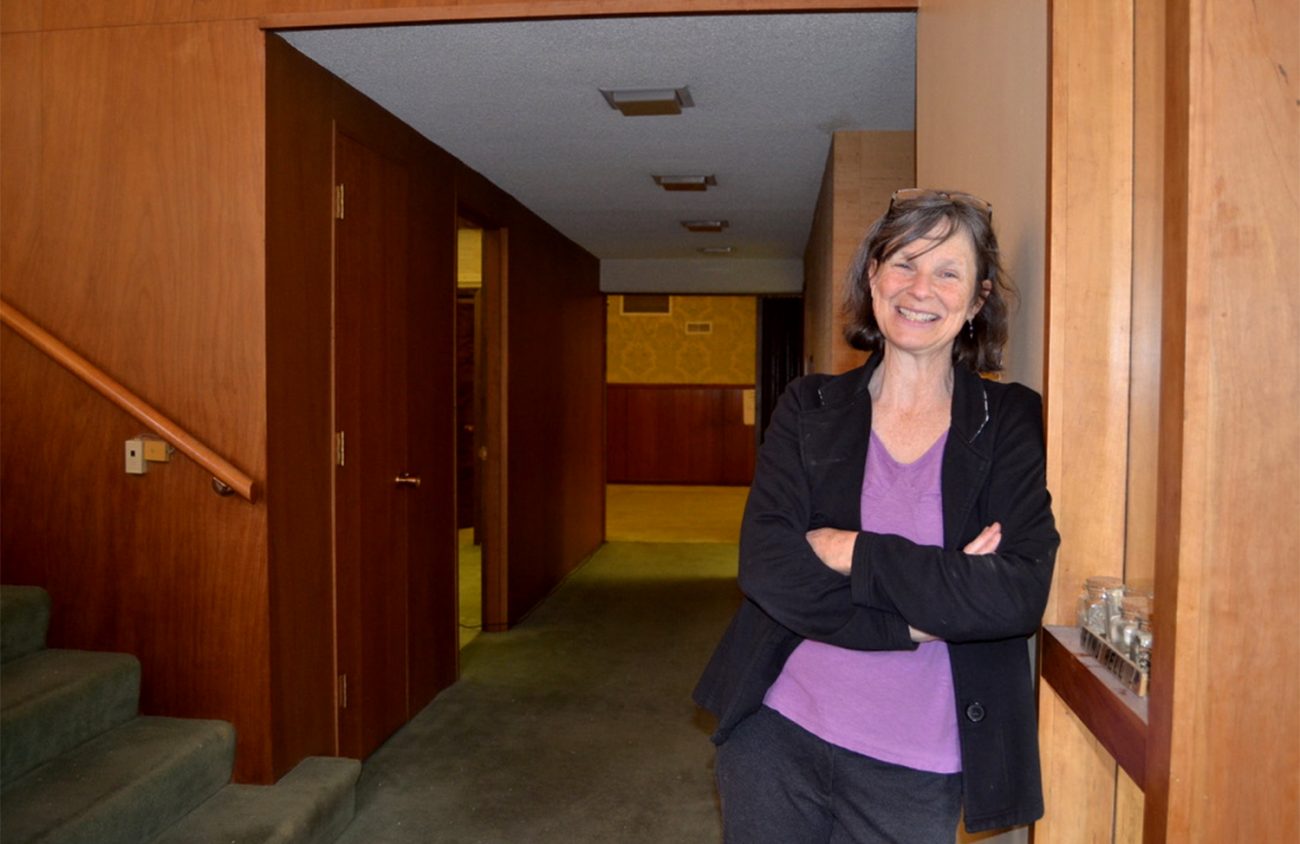New life is invigorating a former mortuary in downtown Eugene as the Trauma Healing Project transforms once dark, windowless rooms into vibrant spaces for activities that promote healing and recovery.
The former casket display room is becoming an acupuncture lounge. The old embalming room will serve as a staff kitchen and meeting room.
The Trauma Healing Project, a nonprofit organization that provides alternative solutions to survivors of trauma, is moving into the former mortuary at 11th Avenue and Charnelton Street because its previous landlord, Lane County Behavioral Health, needed its space back.
The Trauma Healing Project was established 14 years ago to respond to the unmet needs of trauma survivors in the community, says Elaine Walter, its executive director. They accomplish this by providing wellness classes, meditation and acupuncture clinics.
“We wanted to create something that wouldn’t require people to be involved in the mental health system and wouldn’t give people a diagnosis or a label,” she says.
The mortuary building has been around since the early 1900s and was originally a convent associated with St. Mary’s Catholic Church. Most recently, it was occupied by the Poole-Larsen Funeral Home, but has been sitting empty for a number of years.
The owners eventually want to turn the property into apartments, meaning the Trauma Healing Project will have to move again.
“It’s a temporary place for us. It’s a rent rate we can manage in comparison to the growing market rate,” Walters says.
Walters says the organization has been allowed to do some inside remodeling to suit its needs and clear the remnants of the former funeral home. The alluring history of the building has provided interesting experiences in the renovation process.
“We discovered windows and doors that have been paneled over,” Walters says. She gestures to a door that appears on one side of wall but not the other because another wall had been plastered over the entrance.
Each room will be transformed — from a place of sadness to one of healing. The main entrance is tall and open, and the outside wall features some of the few windows in the building. The blurred glass allows natural light to stream through and lightens up the newly painted bright green and white walls.
In what was once the funeral staging room, a giant gold chandelier hangs from the ceiling, complemented by two wall chandeliers in the front. Walters says the large chandelier will be taken down and replaced with modern lighting. The room itself has no natural light; so small windows were cut in the wall closest to the entry room to create a brighter feeling.
Walters says that some people have been wary of housing the organization in a former mortuary, but felt better after visiting the building themselves.
“It actually feels welcoming and good,” she says. “We have done a lot of work to clean the energy.”
Most of the inside of the building is covered in plush light-green carpet, which sits in stark contrast with the dark brown wood-paneled walls. After walking upstairs, Walter shows the light orange and cream half-walls they put up to designate office space for their seven employees.
Walters is unsure what the future will look like for the Trauma Healing Project during its temporary relocation.
“It’s as terrifying as it is exciting,” she says. “It’s an unknown, and the price tag for our next move just feels daunting.”
As soon as the dust settles, Walters says, the project will begin to look for a more permanent location, because two years is not a long time. Until then, they will keep working to make this building a life-filled home.
